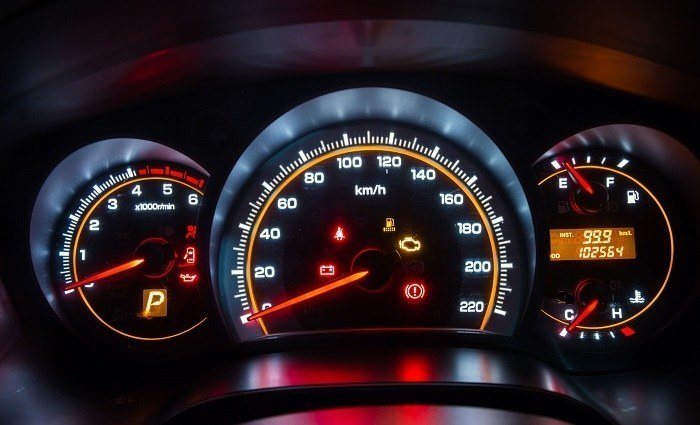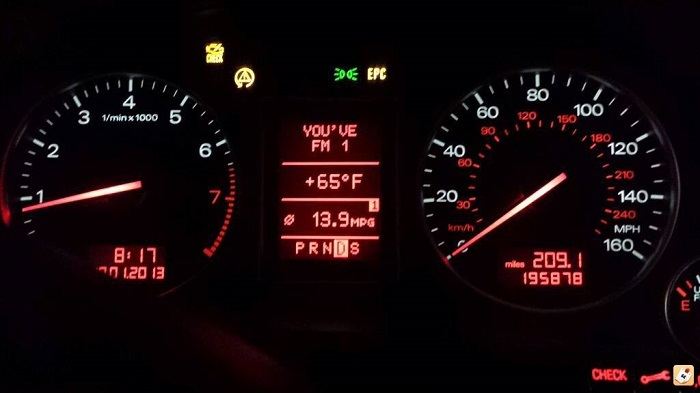by Joshua Thomas
Most modern vehicles will have the limp mode as a feature programmed into them. The feature is meant to be a self-preservation mechanism that helps protect the engine and transmission from any catastrophic failure.
When your vehicle goes into the limp mode, the overall performance reduces greatly as the computer focuses more on preventing damages to important components. It is this huge reduction in performance that makes limp mode quite annoying and hence the need to fix it.
Although the best idea is to “limp” the vehicle to the nearest auto repair shop, it is still possible to fix it or at least bypass it until you are ready to take the vehicle for repairs. Below we explain how and also show you some of the causes and a few ways to prevent it.
Contents

There is a long list of possible engine and transmission issues that can cause the vehicle to go into limp mode. However, the following are the most common causes, and in many instances, one or a combination of a few of them is what will cause your vehicle to go into limp mode.
A malfunctioning or failing transmission system is one of the most common reasons a vehicle goes into limp mode.
The vehicle goes into limp mode to ensure the transmission system is not damaged even further. And some of the common transmission problems that trigger the limp mode will include things like bad solenoids and improperly adjusted linkage in the steering system.
The battery is what powers the car's computer system, and so any problem with it such as an acid leak can also force the car to go into limp mode.
Leaking acid can damage wires, and hence affect the transmission of information to and from the computer, which can be misinterpreted as a problem with the transmission, and hence causing the vehicle to go into limp mode.
It is always important to make sure that important fluids like oil and transmission fluid remain at optimal levels. Failure to do this puts your vehicle at the risk of getting damaged, and when the computer notices this, it can go into limp mode to minimize the risk of damage.
Also, low fluid levels cause low pressure and hence harming the transmission system causing it to underperform. This dip in the performance of the transmission system can initiate the limp mode.
A damaged or broken wiring is also a potential cause of the limp mode. It means the computer will not be getting a proper signal and in response can initiate limp mode to prevent catastrophic vehicle damage.
And besides battery acid leaks, several other things can lead to broken wiring. They include things like heat and being damaged by road debris.
Modern vehicles will rely on several sensors to control the transmission and engine such as the MAP, TPS, MAF, and speed sensors.
If any of these sensors send improper or incorrect signals to the computer, in some instances the limp mode can be activated.

When limp mode initiates, the first thing that you will need to do is to find a safe place to pull over as the car might not be safe to drive. And once you are safely parked, there are different ways of fixing the issue.
Before you do anything else, you should try shutting off the engine and restarting the vehicle to see if this solves the issue.
Here you need to keep the vehicle off for 5 to 10 minutes for it to cool down completely to see whether the computer resets the limp mode or not. Also, you can use this time to check other things such as transmission fluid and oil levels.
In some instances, this brief engine reset is all it takes to rest the limp mode, and you might not even need to do anything else.
Another method you can use to fix the limp mode will entail fixing the underlying wiring issue, which is a common cause of limp mode activation.
Even if after leaving the vehicle switched off for a few minutes the limp mode is still activated, the issue might be the wiring, and so you need to fix it. And a good place to start will be by checking any wiring going to the transmission system.
Check the harness itself and also where it plugs into the transmission. Here you need to check for things like loose connections and damaged wiring and whether the harness looks damaged as all this can lead to limp mode activation.
If you identify any issue here with the wiring, you can fix or have it fixed by a professional mechanic, and when you switch on the vehicle, the limp mode should be deactivated.
If the two methods above do not work, the other alternative is to diagnose and reset the limp mode with a scanner. Better yet, if you already have an OBD scanner, this should even be the first method you try out as it will make it easy to identify the faulty parts causing the limp mode.
Besides the OBD scanner, to use this method you will also need to know how to interpret the different codes or what they imply, and also how to use the scanner. But you should be okay if you follow the simple steps below.
Directions
Step 1: Park Vehicle in a Safe Place
The first step when working on your vehicle is always to park it in a safe place where you will be able to work uninterrupted and away from traffic in case you are on the road. Finding a safe place to work on the vehicle is as important as all the other steps above, and so you should not overlook it.
Step 2: Allow it to Cool Down
Before you start working, you will also need to give the vehicle enough time to cool down. This will ensure that it is safer to work on it and also provides time for the computer to sort things out. In some instances, you might even end up stopping at this step as the limp mode will be reset.
Step 3: Connect the OBD Scanner
Once you confirm that the limp mode is still not deactivated, you can now go ahead and connect the OBD or OBD-2 scanner to check for any issues. The first step here is to find where the scanner connects to the vehicle, and in many instances, it will be under the dash on the driver's side.
Step 4: Start Scan
The next step is to start the scan by pressing the button on your scanner. After a short while, the scanner will display the problematic codes. A simple online search should help you determine what these codes indicate, and hence the cause of the limp mode.
Step 5: Clear the Codes
The last step is to clear the codes by pressing the clear button on your scanner, which should then reset the limp mode. This will be a good fix for clearing codes that no longer apply.
Note: Scanning and resetting the limp mode should only be done after fixing the underlying problem because it only deactivates the mode and will not in any way fix the problem that caused it in the first place.
To ensure you never have to go through the hassle of dealing with limp mode, it is important to find ways to prevent it. While in some instances the limp mode will be unavoidable, here are a few ways that you can decrease the likelihood of it being activated.
1. Check your vehicle fluid levels regularly and refill them when necessary
2. Inspect the wiring regularly and fix any loose connections
3. Never ignore any signs or issues in the transmission system such as slow gear shifting
4. Scan the vehicle often and clear any error codes.
While the limp mode may be annoying, it is your car's way of protecting you and also preventing catastrophic damage. In many instances, it will occur when there is a problem with the engine or transmission system.
The good news is that in many cases the limp mode is fixable, and you will only need to replace the problematic part or fix the underlying problem such as adding more fluid or oil.
With that said, it is also a good idea to take the vehicle to the auto repair shop for professional diagnosis and repair it if necessary, and also make sure you inspect and maintain it regularly as this will prevent limp mode activation.
 |
 |
 |
 |

About Joshua Thomas
Joshua Thomas just simply loves cars and willing to work on them whenever there's chance... sometimes for free.
He started CarCareTotal back in 2017 from the advices of total strangers who witnessed his amazing skills in car repairs here and there.
His goal with this creation is to help car owners better learn how to maintain and repair their cars; as such, the site would cover alot of areas: troubleshooting, product recommendations, tips & tricks.
Joshua received Bachelor of Science in Mechanical Engineering at San Diego State University.
Just Car Care